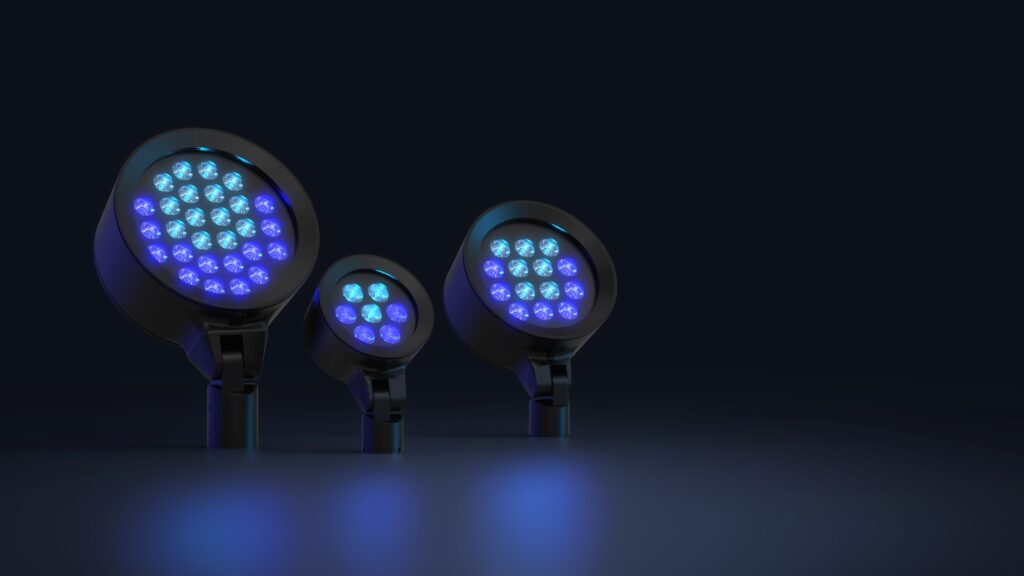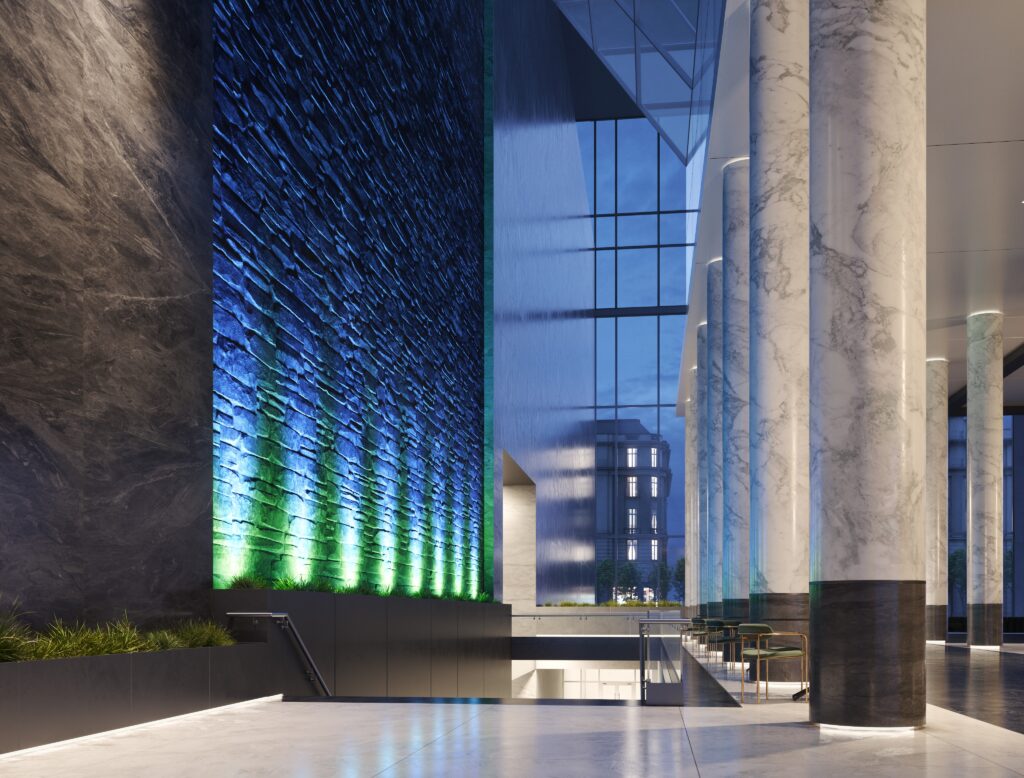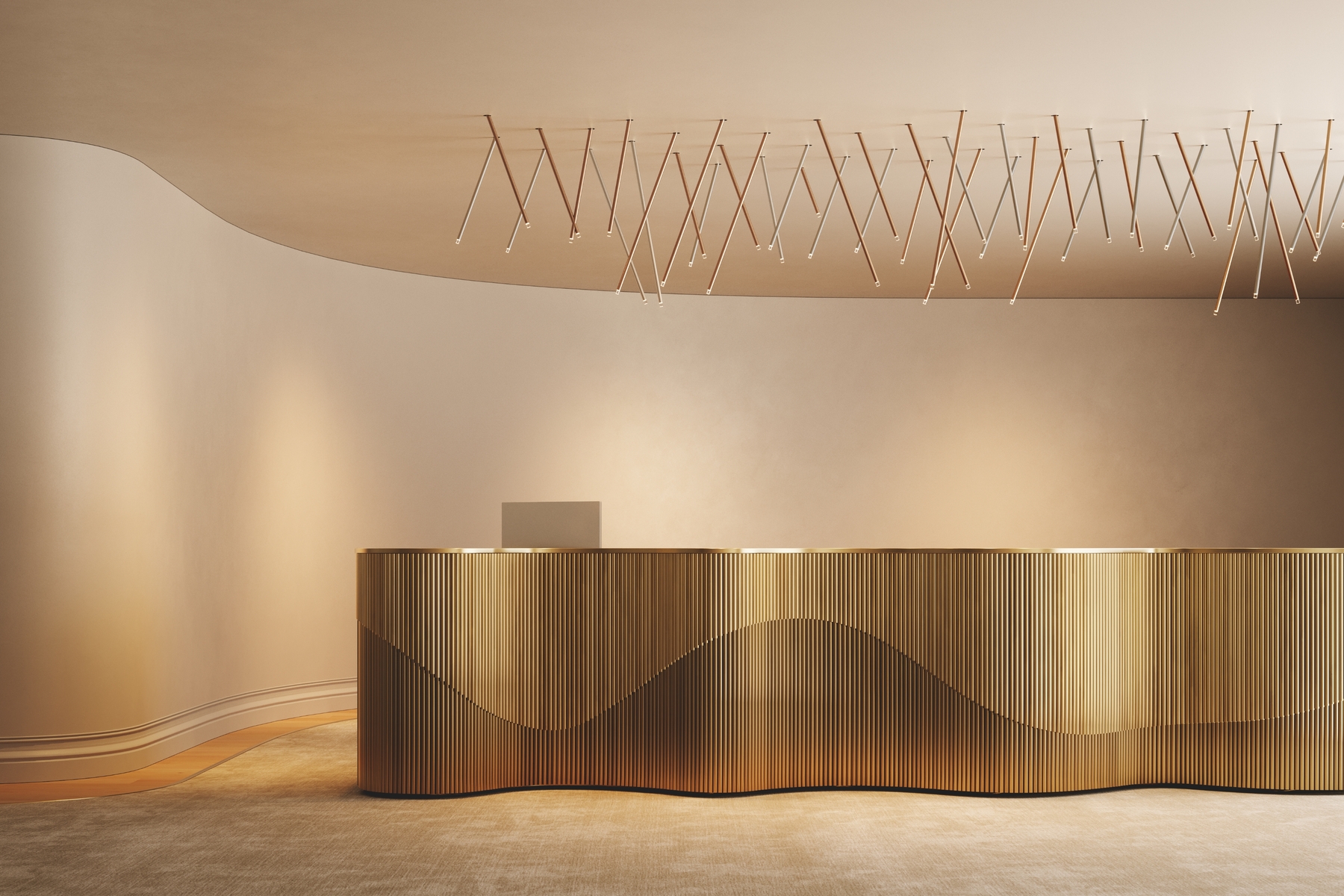Header: Hydrel
The FLAME Lighting Technique, a recent accolade of the LIT Lighting Design Awards developed by Hydrel, is turning heads due to its unique dual-beam approach. This is the result of the combination of engineering excellence and a patent-pending optical engine construction, giving it the ability to create a diverse range of lighting effects.

Innovation comes in red, green, blue, and white
The creative leap that is FLAME’s innovative technique integrates two beams into a single luminaire. A central and an outer beam creates a versatile visual experience, perfect for any project.
The RGBW (Red, Green, Blue, White) regular colour model takes on a new role in this design, as it no longer has only the ability to vary colour variety, becoming also a tool for creating depth and dimension.

To each their own
Available with the SAF7, SAF14 and SAF28 Architectural Family, FLAME offers three distinct models:
The Narrow Flame. With a 30° outer beam and 10° central beam, this model perfectly adds depth to vertical structures such as trees, facades, and columns. Through an accent gradient effect, the Narrow Flame is ideal for spaces where fixtures need to be spaced apart.

The Wide Flame. Boasting a 70° outer beam and a 30° central beam, this model creates a more blended gradient effect. Textured surfaces go perfectly with the Wide Flame, which playfully highlights its patterns. This is the go-to option to create intentional spill lighting in areas such as roadways and arches.

The Lotus Flame. Combining a 70° outer beam with a 10° central beam, this option creates bold individual columns of light, an overall dramatic and stark contrast.

FLAME doesn’t just stand out because of the technicalities and engineering, its beauty comes from the wide range of possibilities it provides. Whether you use it as an uplighting support, to get a smooth gradient effect, or to create striking blocks of light on a facade, FLAME is the perfect tool for creative designers and architects.
A light onto Hydrel
Hydrel is known for its innovative sealing capabilities, high-quality materials, and long-lasting finishes, making its luminaires withstand decades of use with minimal maintenance and unmatched structural integrity. In FLAME, Hydrel combines efficient light sources with precision optical platforms, achieving a photometric performance rarely seen in outdoor lighting.








